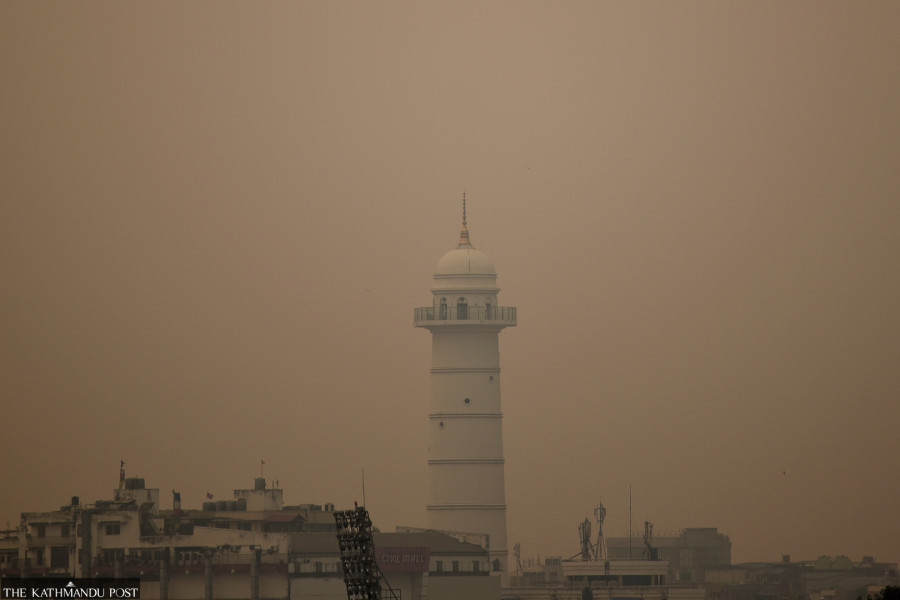Editorial
Region to worry
The growing problem of air pollution calls for close cooperation between actors at home and near abroad.
A drop in temperature has brought with it a sharp decline in air quality. Smog shrouds the skies, obscuring the hills and mountains surrounding Kathmandu Valley. While this is concerning, visuals of air pollution in the neighbouring countries have alarmed the world. Last week, images of the nearly invisible Taj Mahal and India Gate went viral. Further, the smog in parts of Pakistan and northern India was so dense that it was visible from space. According to the WHO, air with AQI values above 300 is labelled hazardous. It is only a matter of time before Kathmandu Valley and other parts of Nepal face a fate similar to India’s New Delhi and Pakistan’s Lahore, where AQI values have surpassed 1,000.
Nepal is the third most polluted country in the world, according to a 2024 report by Air Quality Life Index (AQLI). Particulate pollution is the leading threat to human health in Nepal measured in life expectancy, reducing it by 3.4 years. By comparison, tobacco use cuts life expectancy by 1.9 years, while dietary risks and high blood pressure reduce it by 1.5 years each. What’s more, Nepal’s 30.7 million people live in areas where the annual average particulate pollution level exceeds the WHO guideline. Pretty much the same story repeats every year.
On Thursday, Lalitpur’s air quality index reached 238 at 12:45 pm, getting closer to hazardous levels. Experts warned that air quality would go downhill in the coming days as farmers both in India and Pakistan clear fields after the autumn harvest. According to a recent report by Reuters, the burning of stubble left after harvesting rice has contributed to 40 percent of the pollution in Delhi. Such a dangerous practice in the Indo-Gangetic plains is bound to affect Nepal.
We cannot solely blame our neighbours when we also indulge in harmful practices. A previous study shows that around three million tonnes of agricultural residue are burnt in the Tarai region. Besides these, emissions from vehicles, brick kilns, and open burning are among the country’s significant sources of pollution. If consumed for long, these pollutants are detrimental to our health. According to a 2024 report by the State of Global Air (SOGA), 75 percent of chronic obstructive pulmonary disease (COPD) and 39 percent of lung cancer deaths were attributed to air pollution.
Even as our leaders inhale the same toxic air, their response to tackling air pollution has been woefully inadequate. While actions like banning open burning and monitoring brick kiln emissions have been introduced, they are limited to some local units. Even if vehicles pass emission testing from the Department of Transport Management and get green stickers, they still emit black smoke, as many only service them before the annual pollution tests. In response, the Kathmandu Metropolitan City has purchased a smoke metre to test emissions from such automobiles.
Although these actions are commendable, the federal government must do more. Exhaust from public vehicles is a major problem. Even as nearly 12,000 battery-powered vehicles were imported last year, these were primarily private ones. The government should open avenues for people to switch to eco-friendly ways of cooking and travelling. If we act seriously to reduce particulate pollution to WHO guidelines, countless lives could be saved. Additionally, residents of Tarai and Kathmandu could gain 4.8 and 2.6 years of life expectancy, respectively. While tackling domestic sources of air pollution is essential, it is as important to acknowledge its transboundary nature. Only a coordinated, collective, multinational effort can help clean up the air we breathe.




 8.12°C Kathmandu
8.12°C Kathmandu












%20(1).jpg&w=300&height=200)

